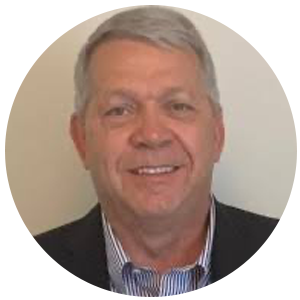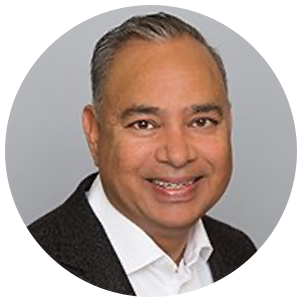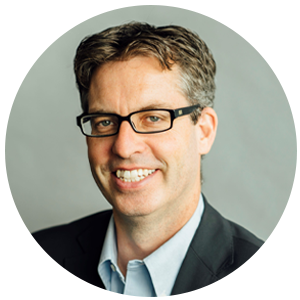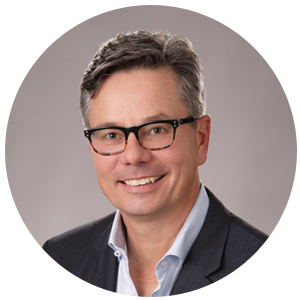We were fortunate to have the opportunity to sit down with Dr. Raul Rodriguez of Delray Center for Brain Science (Founder & Medical Director) who has focused his entire career on bettering the psychiatry and psychology field, by always questioning if there is a better way to treat patients.
He shared his thoughts on the BNA™ Platform and the value of BNA™ reports to support assessment and treatment pathways for patients.
Dr. Rodriguez’s Education and Experience
Dr. Rodriguez began his career in earnest as Chief Resident at the University of Miami-Jackson Memorial Hospital. With degrees in both medicine and chemistry, Dr. Rodriguez fully understands the complex interaction between psychotropic medications and the delicate biochemical balance of the human body. Dr. Rodriguez is also a firm believer in incorporating effective, alternative treatments in combination with standard psychiatry and psychopharmacology. Individualized treatment plans developed by Dr. Rodriguez often include deep transcranial magnetic stimulation (deep TMS or dTMS) therapy, neurofeedback, yoga, acupuncture, and physical fitness.
The comprehensive treatments available by Dr. Rodriguez reflect his central belief that effective treatment must be holistic and well-rounded, treating the mind, body, and spirit. The commitment to comprehensive wellness is fundamental in Dr. Rodriguez’s approach to helping every client. As a Diplomate on both the American Board of Psychiatry & Neurology and the American Board of Addiction Medicine, Dr. Rodriguez remains at the forefront of advanced psychopharmacology, always utilizing new medications in order to treat conditions like depression and substance use disorder on an outpatient basis.
We began our conversation with Dr. Rodriguez with the goal of better understanding his treatment plan, the value he sees in directly measuring brain electrical activity and what his and his patient’s reactions have been to the BNA™ Reports.
Dr. Rodriguez’s Approach
From early in his career, it became apparent to Dr. Rodriguez that there were failings in conventional psychiatric treatment that left many without any hope of improvement or recovery. His response was to develop an innovative approach to the treatment of mental health disorders that focused on treating the person in their entirety. The program that Dr. Rodriguez developed heavily emphasizes personal attention at a level not normally found in other inpatient or outpatient programs. The great success that Dr. Rodriguez’s unique approach to mental health has had over the years has allowed Dr. Rodriguez to continue to add new programs and facilities to better serve his patients.
Highlights from our Conversation
For patients who are experiencing neurological symptoms such as seizures, epilepsy, or other disorders affecting the brain, an EEG can provide valuable information about the brain’s activity and help diagnose the underlying condition. The BNA™ Platform builds on this base EEG capability to provide an objective way to measure brain function, or cognition, while the brain is active and at rest. This makes EEG relevant to doctors like Dr. Rodriquez, who are looking for a tangible understanding of what is or is not occurring in their patient’s brains.
In our first clip, you can hear Dr. Rodriguez speak about the overwhelmingly positive patient response to the BNA™ reports to validate their conditions and treatment paths:
Transcript from conversation with Dr. Rodriguez:
The patient response to BNA™ has been overwhelmingly positive. The patients, when you tell them you’re going to get a brain mapping, they love it. They absolutely love it, and they take the treatment,they take me, [and] they take the condition everything so much more seriously. One of the issues that psychiatry has always dealt with, or mental health has always dealt with, has been stigma. [This is] because mental health, mental health conditions, and disorders, you see them behaviorally, but many people still think, ‘oh, it’s in your head’. Or, ‘oh, that’s not real’. Or ‘oh, you’re exaggerating. Just snap out of it.’ [They have] that mindset, because they had no real tangible, visual evidence of what was happening. There was no blood tests. There was no test results. There was no CT scan you can do that shows, that you have schizophrenia, or you have bipolar disorder. That did not exist.
With BNA™, when a patient sees this, first off, just the fact that you’re doing this kind of testing on them, when you assess them using the Firefly BNA™ technology, when they see this, they now take it so much more seriously. To them, it’s like getting an MRI, which they equate to other branches of medicine, which they [do] take seriously. So [when you do a BNA™], they take now their mental health much more seriously, and now you have this big test that they’re doing, and it shows all this information. So that’s the first thing, is they have the perceived value of what you’re doing really goes up in their eyes because of this.
An EEG can also be helpful in monitoring the progression of neurological disorders and evaluating the effectiveness of treatment. For example, in patients with epilepsy, an EEG can be used to determine if medications are controlling seizures or if adjustments to treatment are needed.The added power gained from the BNA™ platform is in being able to see clear cause-and-effect relationships for mental health with treatments. This gives clinicians and patients a level of understanding and visibility into their brain’s health that they have never had before.
In our second clip, you can hear once again from Dr. Rodriguez about the importance and value in having patients understand the results and meanings of each scan.
Transcript from conversation with Dr. Rodriguez:
[With the BNA™ Report] you now have visual evidence of, “Oh, this is my disorder. I see this. I see this on the BNA™ report,” and so forth, so a lot of their fears and concerns and doubts have been validated by an objective result. [The patient says] “Okay. Wow, okay, this is really happening. This is my brain,” and so forth. And then when they see the follow ups, they see the improvements, it validates the treatment itself. [The patient says] “Okay. I’m doing something to help myself. I can see visual evidence that I’m getting better by doing this.”
Advancements in artificial intelligence and cloud computing can take EEG technology and revolutionize the way we understand the brain and how we diagnose and treat neurological diseases. For example, high-density EEG in conjunction with the BNA™ Platform can now provide detailed information about the location and timing of abnormal brain activity, leading to better precision in diagnosis and treatment.
The speed in which critical information and understanding can provide to a patient because of the power and capability of the BNA™ Platform is absolutely life-changing for patients who are receiving treatment for mental illness or a neurological disorder.
As we hear from Dr. Rodriguez in our last clip – the BNA™ Platform takes the already valuable EEG scan and creates a rich, detailed and communicative picture for the health of a patient’s brain:
Now using the Firefly BNA™ platform, we’re able to get information right away, information that we never had before, and we can see at the neurophysiologic functional level of the brain [and] how that brain is firing. And that really helps guide us in terms of what condition are we dealing with, what are the complexities of this case, what is unique about this case, how might we cater this person’s treatment to help their particular case based on both what they report and based on also what we see now on the BNA™ report.
Dr. Rodriguez’s Education includes:
- M.D. from the University of South Florida College of Medicine
- B.A. (Chemistry) from Florida International University (Magna Cum Laude)
- Adult Psychiatry Residency Program – University of Miami (Chief Resident)
Dr. Rodriguez’s Associations & Certifications:
- American Board of Psychiatry and Neurology (Diplomate)
- American Board of Addiction Medicine (Diplomate)
- American Society of Addiction Medicine Certified
- Certified MAT Provider
- Medical Review OfficerTranscranial Magnetic Stimulation (TMS) Provider
- American Psychiatric Association (Member)
- Florida Psychiatric Society (Member)
- Committee of Interns and Residents (Member)
- Diocese of Palm Beach Substance Abuse Ministry (Member)
- American Society of Addiction Medicine (Member)
- Florida Society of Addiction Medicine (Member)
- Board of Directors, Mental Health Association of Palm Beach (formerly)
We look forward to sharing how our BNA™ technology supports clinics to assess, track, and improve brain health. If you are a clinic interested in learning more, contact us here for details.



